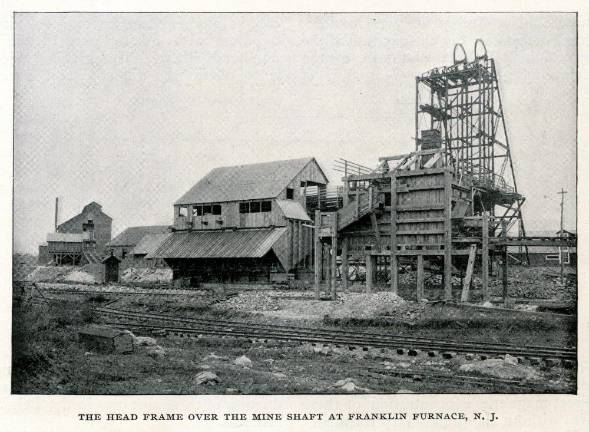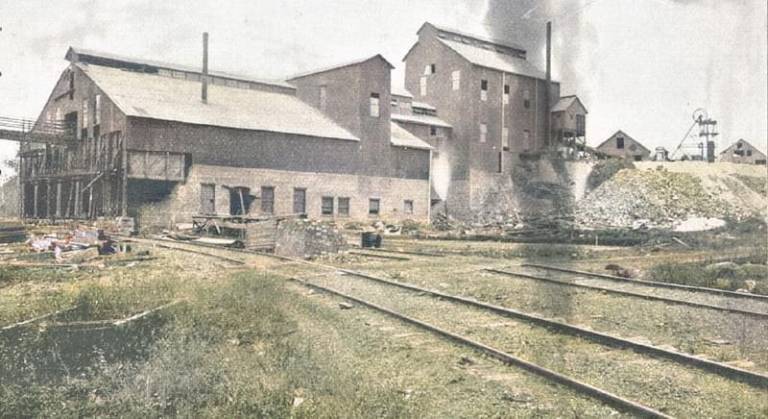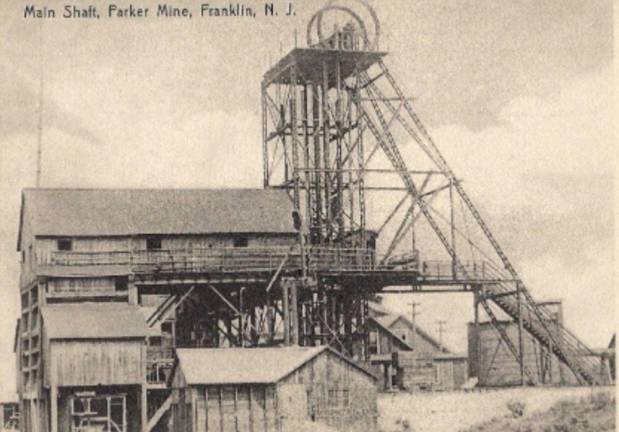


One of the three historical markers awarded last year (2021) was for the Parker Shaft, representing the mine and plant by the same name. The marker was just mounted by Sussex County and is located on the exact location where the plant stood. This is in the parking lot area of the Franklin Fire Department. The many members of the mineral collecting “rock hound” community is excited and looking forward to a celebration in the near future.
Much of the following is written by Ralph Bonard, president of the Franklin Ogdensburg Mineralogical Society (FOMS). Bonard supported the application for the Parker Shaft marker.
Sussex County has a very rich mining history dating back to the 1700s when the Dutch first mined here for copper. As the years passed, great iron ore deposits were discovered in the hills of Sussex County and mines sprung up across the land. In Franklin Furnace, iron mining was big business. There were several mines around town and at Franklin Pond stood a massive iron furnace and millworks. As iron mining began to dwindle, another metal was discovered in Franklin — zinc.
Zinc was found in the form of zincite, Franklinite, and willemite. These were found in such abundance that Franklin and Sterling became the greatest zinc deposit on Earth. But that wasn’t all. The Franklin Mine is one of the most geologically significant mineral deposits on Earth. Geologists, mineralogists, and scientists from around the world have long studied the ore body and mineral deposits located here. Collectors from around the world go to great lengths to obtain specimens from this locale. Some of the rarest and most treasured minerals were discovered here in the Parker Shaft. First mined around 1897, the Parker Shaft was one of the first improvements with the great consolidation of mining companies to form the NJ Zinc Co in 1897. The shaft was sunk to a level of 975 feet and was abandoned by 1910 when the much larger and more capable Palmer Shaft and Mill began full operation a quarter mile west of the Parker complex. Still visible in the southwest corner of the fire department parking lot is the concrete cap that covers the Parker Shaft. The minerals that are sought after by collectors today are what were generally considered waste rock to the mining company. Much of that waste rock was used as fill to build roads and foundations and much of it was used to backfill the mine. Every once in a while, a collector will discover one of these rarities while collecting. Many of these minerals are fluorescent under a UV light and fluoresce in red, green, yellow, white, blue, orange, and many shades in between! To see the best examples of these minerals that were mined right under our feet, all one has to do is visit the Franklin Mineral Museum or the Sterling Hill Mining Museum. They both have an outstanding assortment to see! I would encourage anyone that is interested to become a member at both museums and if you’re interested in learning even more about this amazing mineral locality join the FOMS. We especially encourage parents to get children involved and we have programs geared towards teaching children about not only the minerals we have here but minerals and geology from around the world. For more information please visit: fomsnj.org, franklinmineralmuseum.com, sterlinghillminingmuseum.org.
Thanks to Ralph Bonard for his superb description and I also encourage Sussex County citizens to view the site and the Mineral Museum and the Sterling Hill Mining Museum.
